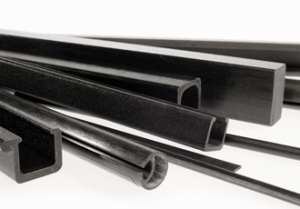Polymer banknotes exhibit longer lives than paper versions

Ever since the first banknotes were created and recorded in the 7th century over in China they have been made from cotton paper.Paper money did not really catch on in Europe, however, until nearly a thousand years later. It was first widely used in the UK in 1759, when gold shortages caused by the Seven Years War forced the Bank of England to issue £10 notes for the first time. The first £5 notes followed about 20 years later at the start of the French Revolution. More recently, the Bank has begun switching to a special polymer that promises to be more durable and cleaner than paper.
The properties and sophistication of polymers have been evolving for several decades’ thanks for the development work undertaken by specialist plastics manufacturers such as igus, who specialise in motion plastics. The company has been working with polymers for over 50 years, recently celebrating 30 years of their original engineering polymer, called iglidur G. When used in plain bearings, these materials offer far superior performance in motion applications, where wear and tear is inevitable. Constant testing of this material and materials developed since, enables igus to provide a predicted lifetime of the bearing in a given application.
The extent of new polymer development in the banking world is such that it is now suitable for use as currency. Today, over 20 countries issue polymer notes – the Bank of England introducing the £5 polymer banknote in September last year and the £10 note just recently. Of course, as with bearings, the banknotes’ predicted lifetime can vary significantly, depending on where and how it is used. In laymen’s terms, that is the environmental and the wear conditions – e.g. hot and humid climates versus cold and dry, plus the fact that a banknote of low denomination is handled more frequently than a note of high domination, which therefore undergoes less wear. When compared to paper, a polymer £5 note lasts approximately 3.8 times longer, and the new £10 note 4.5 times longer. The rarer £50 note, if or when it is introduced, is expected to last six times longer.
Bearing in mind both environmental and wear factors, igus’ engineering polymers are structured specifically for the environments and conditions in which they will operate. Bearings used in agricultural machinery, for example, need to be extremely resistant to wear and cope with high surface and edge pressures. In the food and packaging industry, plastic materials must be FDA-compliant and able to endure high-pressure or chemical wash-downs.
This is similar to the structure of the polymers developed for the Bank’s notes - the material is resistant to damage through wear and tear, and will survive several washing cycles. As it is impermeable to water and non-fibrous in nature, the material repels dirt and moisture, ensuring the notes stay cleaner for longer than their paper counterparts.
Similarly, the homogeneous structure of the igus polymers – thermoplastic base polymer, fibres and filling materials and solid lubricants – results in good sliding and wear properties of the bearings. In addition, they are self-lubricating so do not need any maintenance during the predicated lifetime.
As to the carbon footprint of the new polymer notes over their full lifecycle, as with polymer bearings, they have a lower environmental impact than their conventional equivalents. The main reason is that both polymer banknotes and polymer bearings last longer. The other decisive factor is the reduced environmental burdens associated in the materials processing and production of new notes to replace the unfit ones.
Concerning bearings, as a rule, the energy required to produce plastic products is far lower than for metals parts. As an example, the production of 1 litre of aluminium requires the use of 15 litres of oil. For plastic, on the other hand, over 70% less oil is required – that is a significant difference. During manufacture, they are injection moulded, which is an efficient process, that creates virtually no waste.
When polymer bank notes reach the end of their life, the Bank of England plans to recycle them, as this process has the least impact on the environment. But how will our shiny new £5 and £10 notes end their life? They will be turned into pellets before being used to make new plastic items such as flowerpots.
Similar articles
More from igus UK Limited
- From garage business to world leader: igus founders celebrate 90th birthday 22nd June 2021
- VOTW - Metal out plastic in! 10th June 2021
- igus robot works alongside agri-tech startup 18th May 2021
- Tribo-polymers increase machine service life and efficiency 10th May 2021












Write a comment
No comments